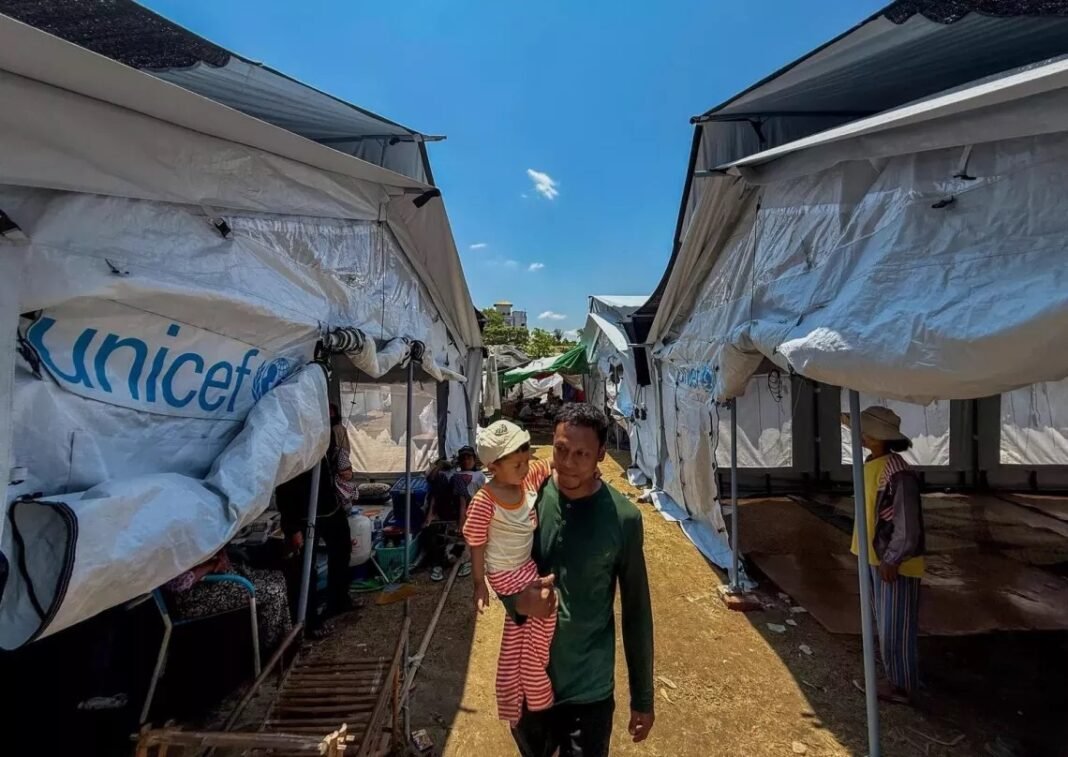Diplomat Foreign Desk
Myanmar: A girl queues for essential relief supplies during a distribution at a temporary camp in Mandalay Region.
The devastating earthquake that struck Myanmar in March 2025 has left around 2 million children in earthquake-affected areas in need of urgent humanitarian assistance, grappling not only with the devastation of the quake, but also with the ongoing impacts of conflict and insecurity.
What happened?
On 28 March 2025, a powerful 7.7 magnitude earthquake struck near Mandalay, the country’s second-largest city, and was quickly followed by a powerful aftershock of magnitude 6.4. More than 3,700 people have reportedly been killed and thousands more have been injured – many of them children.
Homes, schools, and critical infrastructure have sustained severe damage. Tens of thousands of homes have been damaged or destroyed.
Many families are living in overcrowded, makeshift shelters with limited access to clean water, healthcare, and education. Vital power, communications and transport infrastructure have also been disrupted for many communities, while the destruction of health facilities has significantly reduced access to essential nutrition services, including lifesaving interventions and preventive services for acute malnutrition.
The earthquake and the continued aftershocks have struck communities already grappling with conflict, mass displacement, and deepening poverty – further intensifying a crisis that had already left more than 6.5 million children in need of humanitarian assistance across the country.
How is UNICEF responding?
UNICEF teams are on the ground in the hardest-hit areas, working with partners and local responders to support children and their families.
They are delivering life-saving supplies, including medical kits, tents, and nutrition products; providing temporary access to safe water – primarily through the rapid delivery of water purification supplies – and supplying critical hygiene items; distributing essential learning packages and roofing sheets for temporary learning spaces; and providing mental health and psychosocial support through child-friendly spaces, community outreach, and trained volunteers. (UNICEF)





